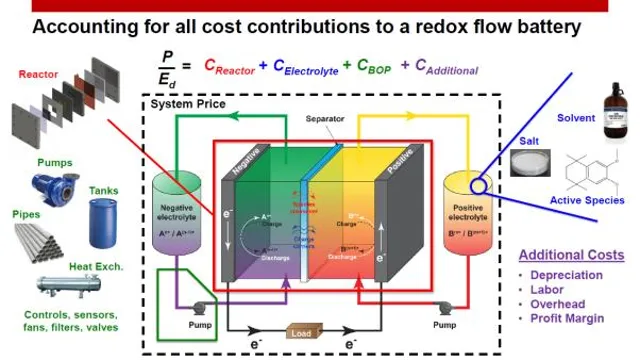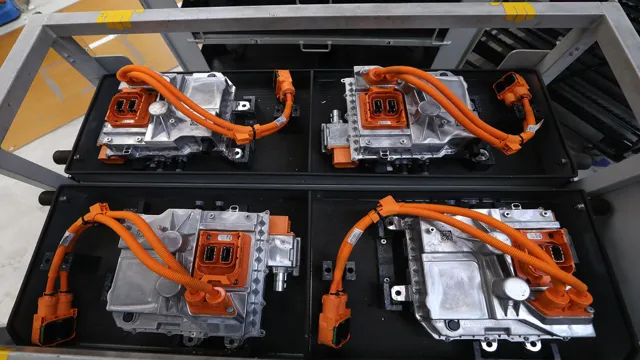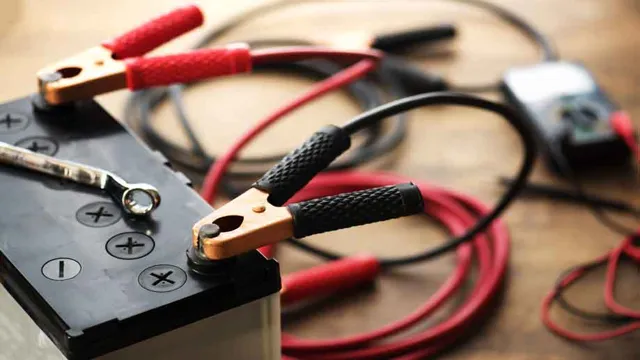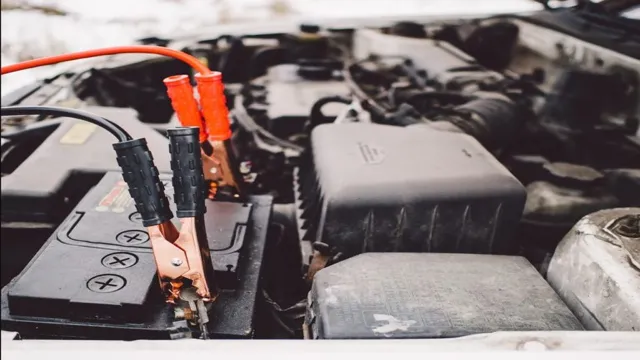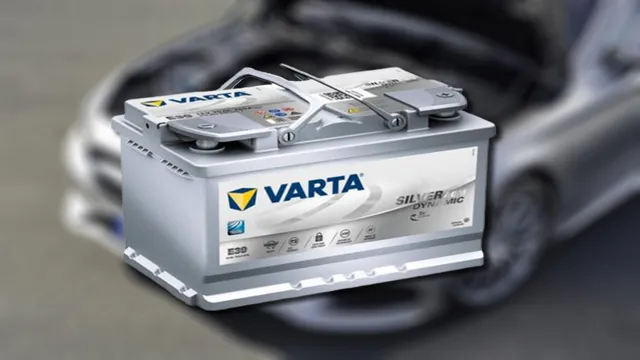Juice Up Your Ride: The Ins and Outs of Car Battery Electric Flow
We all know that a car battery is essential for starting our vehicles, but have you ever wondered how it works? It’s important to understand the electric flow of a car battery, especially if you’re experiencing any issues with your vehicle’s electrical system. Think of your car battery as a water pump that pushes water (electricity) through a hose (wires) to power your car’s electrical systems. The battery stores electrical energy in its cells, which is then released in the form of electrical currents to start the engine and power accessories such as headlights and radios.
But what happens when your car’s electrical system isn’t working as it should? It could be due to a variety of issues, such as a dead battery, corroded terminals, or a faulty alternator. Understanding the basics of how a car battery works can help you diagnose and potentially fix these problems. In this blog, we’ll dive deeper into the electric flow of a car battery, including how it charges, how it powers your car, and how to troubleshoot common problems.
By the end, you’ll have a better understanding of what’s happening under the hood of your vehicle and how to keep it running smoothly. So, let’s get started!
What is Car Battery Electric Flow?
Car battery electric flow refers to the movement of electrical energy in a car’s battery. When a car’s engine starts, the battery produces an electrical current that flows through the car’s electrical system, providing power to all of the vehicle’s electrical components. The flow of electrical energy is facilitated by the chemical reactions that occur within the battery, which convert chemical energy into electrical energy.
As the battery discharges, the chemical reactions slow down and the amount of available electrical energy decreases. Recharging the battery reverses the chemical reactions and replenishes the battery’s electrical energy. So, car battery electric flow is a critical component of a car’s electrical system, and understanding it is key to maintaining and extending the life of a car’s battery.
Explaining the Concept of Electric Flow in Batteries
Electric flow is the movement of charged particles, such as electrons, through a conductor. This is the basic principle behind the function of a car battery. The battery generates electrical energy through a chemical reaction, and this energy is then used to power the car’s electrical system.
The flow of electric current between the positive and negative terminals of the battery creates a voltage, and this voltage powers the car’s starter motor. Additionally, the car’s alternator recharges the battery while the engine is running, maintaining the electric flow. Understanding electric flow in car batteries is essential for maintaining the battery’s health and preventing electrical failures in the car’s systems.
It’s also important to note that the flow of electricity in a battery is not a constant, steady stream, but rather a burst of energy that occurs when the battery is discharged or charged up. Therefore, it’s important to properly maintain the battery to ensure a consistent and reliable electric flow.
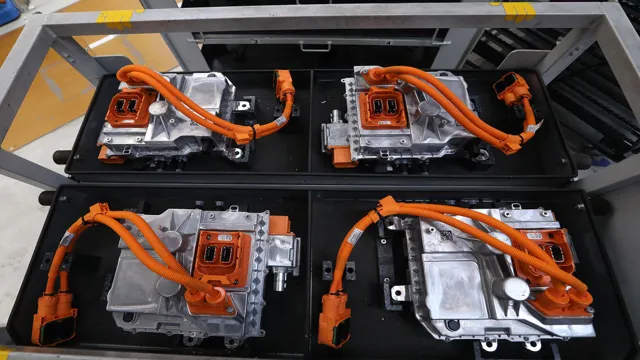
Factors Affecting Car Battery Electric Flow
Car batteries are essential components of vehicles that offer a reliable power source. Electric flow is a crucial factor that affects the functionality of car batteries. Various components can impact the electric flow, including the battery’s age, temperature, and usage.
Over time, a battery’s electric capacity decreases, leading to reduced electric flow, making it harder for the vehicle to start. Additionally, extreme temperatures can affect the battery’s performance. When temperatures drop too low, the battery’s chemical reactions slow down, reducing electric flow.
On the other hand, too much heat can increase the battery’s internal reactions, leading to faster degradation and reduced electric flow. Finally, pro-longed usage of the car battery can cause wear and tear, leading to weak electric flow and even total failure. Therefore, car owners must monitor the battery’s age, temperature conditions, and usage to ensure optimum electric flow, reducing the risk of breakdowns and costly replacements down the road.
State of Charge and Discharge of the Battery
Car Battery, State of Charge, State of Discharge, Electric Flow, Factors The state of charge and discharge of a car battery is critical to a vehicle’s performance. There are various factors that can affect the electric flow in a car battery. One of the most significant factors is the state of charge, which is a measurement of how much energy is stored in the battery.
A fully charged battery will have more electric flow, whereas a partially discharged battery will have less electric flow. Another significant factor is the state of discharge, which is a measurement of how much energy has been used from the battery. As the state of discharge increases, the electric flow in the battery will start to decrease.
Other factors that can affect the electric flow in a car battery include the age of the battery, the temperature and humidity of the environment, the type of vehicle, and the type of driving conditions. It is essential to keep these factors in mind to maintain the optimal performance of a car battery and ensure that the electric flow is sufficient for the vehicle’s needs. So, maintaining a car battery’s state of charge and discharge is crucial to your car’s overall performance and longevity.
Temperature Effects on Battery Electric Flow
Temperature effects on battery electric flow can significantly impact a car’s performance. Many factors can affect a car battery’s efficiency, and among the most critical is temperature. Extreme temperatures can degrade a battery’s performance, causing its capacity to reduce over time.
When batteries are exposed to high temperatures, they become more vulnerable to internal damage and higher discharge rates. At cold temperatures, batteries tend to discharge more slowly, making it harder to start the car. Therefore, it is important to keep your car’s battery at a moderate temperature range, ideally between 20-30℃, to maintain its efficiency and performance.
Extreme temperatures can cause irreversible damage to the battery and shorten its lifespan. It is also important to consider the type of battery used as it may have inherent characteristics that could affect its performance under extreme temperatures. A reliable battery with a temperature-tolerant design can handle fluctuations in temperature without affecting its performance and longevity.
Thus, it is crucial to ensure that the battery chosen is the correct type and is well-maintained to maximize its efficiency and performance throughout its useful life.
Testing Car Battery Electric Flow
If you’re experiencing issues with your car’s electrical system, it’s possible that the problem lies with your car battery’s electric flow. Testing the electric flow of your car battery can help diagnose the issue quickly and accurately. To do this, you’ll need a multimeter, which is easily obtainable from an auto parts store.
First, make sure your car is turned off and the battery is disconnected. Next, set your multimeter to measure DC voltage and connect the positive lead to the positive terminal on the battery and the negative lead to the negative terminal. A fully charged battery should show a reading of around 1
6 volts. If your reading falls below 12 volts, this could be an indication of a dying or faulty battery. Keep in mind that this is just one method of testing the electric flow of your car battery, and other factors could also be at play.
If you’re unsure of how to proceed or if the issue persists, it’s always best to seek the help of a professional mechanic to ensure your car is running as smoothly and safely as possible.
Using a Multimeter to Measure Electric Flow
Car battery electric flow Having a reliable and fully functional car battery is crucial for a smooth driving experience, and measuring its electric flow can help you avoid unexpected breakdowns or other issues while on the road. To test the electric flow of your car battery, you can use a multimeter, a handy tool that can measure voltage, current, and resistance. First, make sure your car is turned off, and connect the multimeter’s red probe to the battery’s positive terminal and the black probe to the negative terminal.
Set the multimeter to the DC voltage mode and turn it on. A fully charged battery should show a voltage between 16 and 1
8 volts. Anything below 12 volts can indicate a weak or discharged battery, while anything above 14 volts can be a sign of an overcharging alternator. By regularly testing your car battery’s electric flow, you can identify potential problems and take appropriate action before they escalate.
Interpreting Test Results
Testing car battery electric flow is an essential task for any vehicle owner to ensure that their car is running smoothly. The first step in interpreting test results is to understand what the various readings mean. A battery tester typically measures the voltage, cold-cranking amps, and reserve capacity of your car battery.
These tests can help identify whether your battery is in good condition or if it needs to be replaced. If your battery’s voltage is too low, this could indicate a problem with your alternator or another issue within your vehicle’s electrical system. On the other hand, if your battery’s cold-cranking amps are too low, it may not be able to start your car on particularly cold days.
Reserve capacity is also important to determine how long your battery can continue to power your vehicle’s electrical systems if the alternator fails. By interpreting the results of your car battery electric flow test, you can take necessary steps to maintain your vehicle’s health and prevent potential breakdowns on the road.
Maintaining Car Battery Electric Flow
Maintaining the electric flow of your car battery is crucial to keep your vehicle running smoothly. A car battery provides electricity to the starter motor, which then turns the engine over. To maintain the electrical flow, make sure that your battery terminals are clean and free of corrosion.
You can use a wire brush or a solution of baking soda and water to clean the terminals. Another way to maintain battery electricity is to avoid leaving your lights or other electronics on when the car is turned off, as it can drain the battery quickly. Regularly checking your battery’s voltage levels and charging it when necessary is also a good practice to ensure optimal performance.
A weak battery can cause problems, including difficulty starting your car, so it’s important to replace it if it’s showing signs of wear and tear. Properly maintaining the electric flow of your car battery can help you avoid issues down the road and ensure that your vehicle is running its best.
Tips to Maintain Electric Flow in Car Batteries
Maintaining your car battery’s electric flow is crucial to ensure that your vehicle runs smoothly and efficiently. One tip is to regularly clean the battery terminals, as this buildup of corrosion and dirt can impede the flow of electricity. You can clean the terminals with a mixture of baking soda and water, using a wire brush to scrub away any grime.
Another tip is to keep your battery charged, which can be done by driving your car regularly or using a battery charger. If your battery is constantly low, it can cause damage to the internal components and shorten its lifespan. Additionally, avoid leaving your vehicle’s headlights or electronics on when the engine is turned off, as this can drain the battery unnecessarily.
With these simple tips, you can maintain your car battery’s electric flow and avoid any unexpected breakdowns on the road.
Conclusion
In conclusion, the flow of electricity in a car battery is like the life-blood of your vehicle. The electrons move through the circuit, powering everything from the headlights to the engine itself. And just like our bodies need a healthy flow of blood to function properly, so too does your car need a strong and steady flow of electricity.
So the next time you turn the key and your car roars to life, take a moment to appreciate the amazing electric flow that makes it all possible. Because without it, you’d be stuck in neutral!”
FAQs
What is an electric car battery?
An electric car battery is a rechargeable lithium-ion battery that stores electrical energy to provide power to an electric motor.
Can you recharge an electric car battery?
Yes, an electric car battery can be recharged using a charging station or a standard electrical outlet.
How long does it take to charge an electric car battery?
The time it takes to charge an electric car battery varies depending on the size of the battery and the charging method used. A standard electric outlet may take several hours, while a fast-charging station can recharge a battery to 80% in less than an hour.
How much does it cost to replace an electric car battery?
The cost to replace an electric car battery depends on the make and model of the vehicle and the size of the battery. On average, a replacement battery can cost between $5,000 and $10,000.
How does the flow of electricity in an electric car battery work?
The electric current flows from the battery to the electric motor, which converts the electrical energy into mechanical energy to power the vehicle. When the car slows down or stops, the motor acts as a generator and converts the kinetic energy back into electrical energy to recharge the battery.
